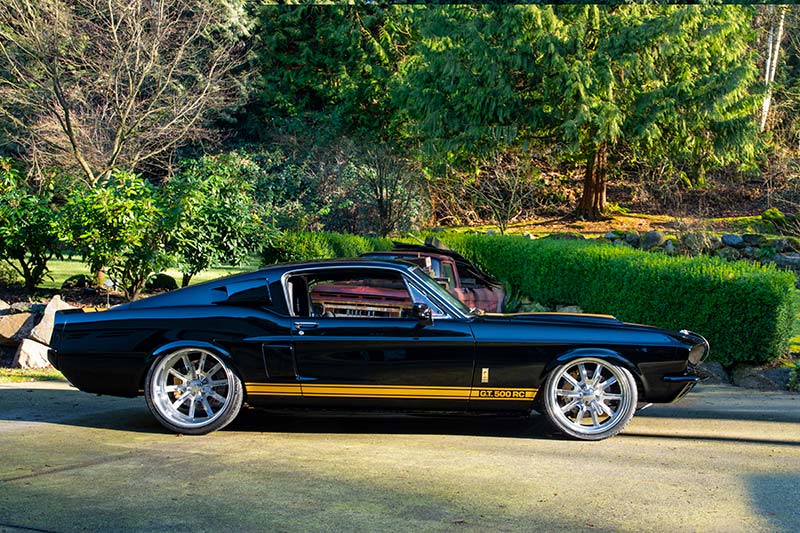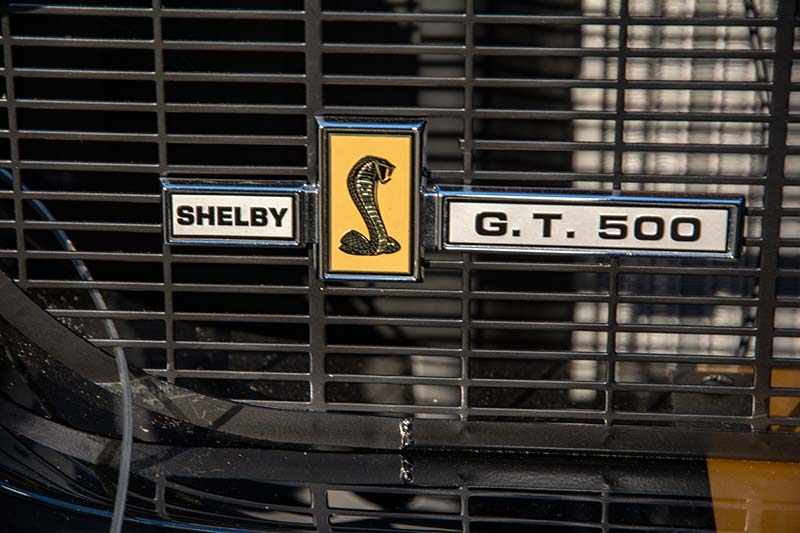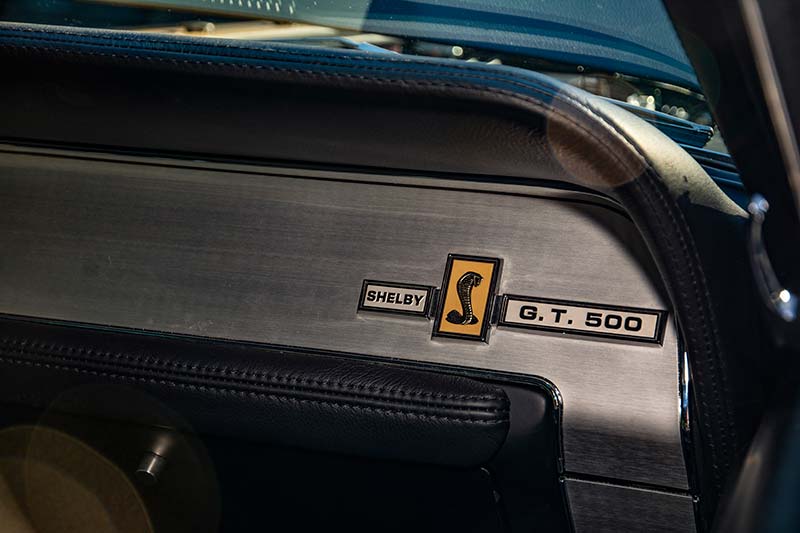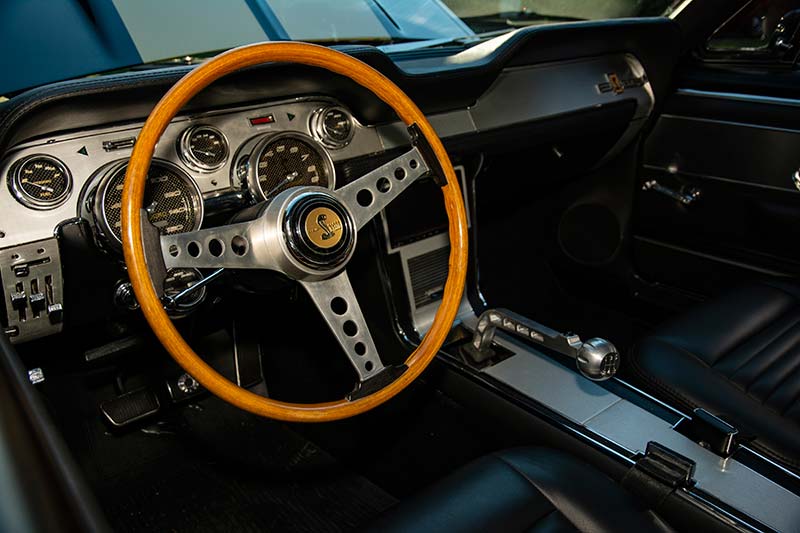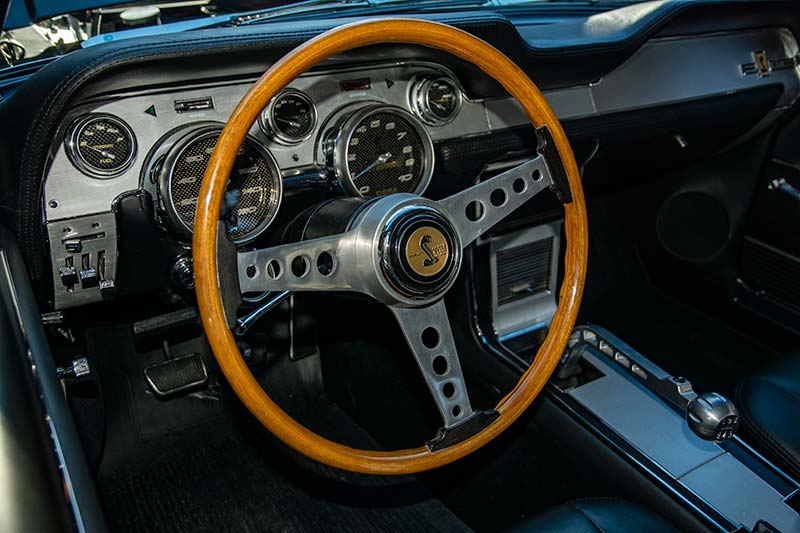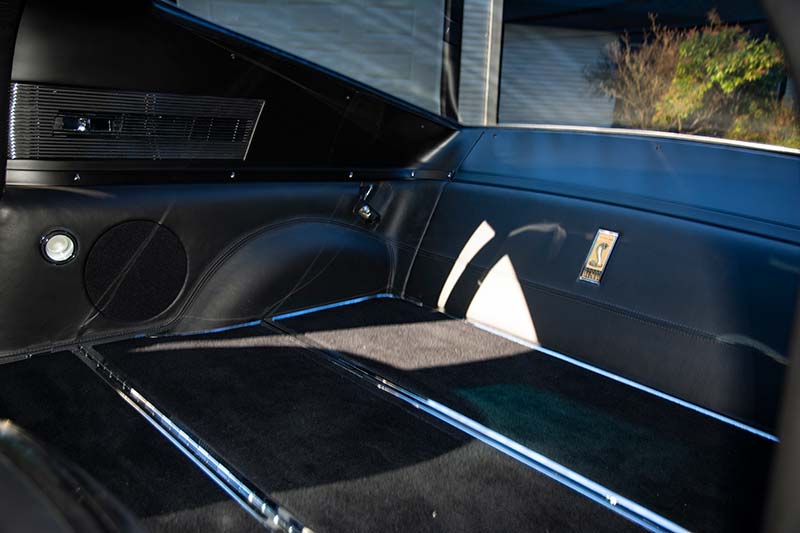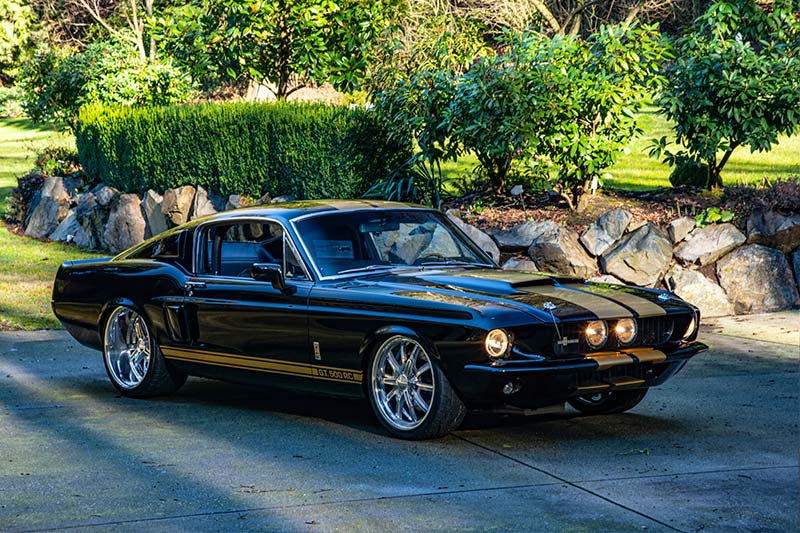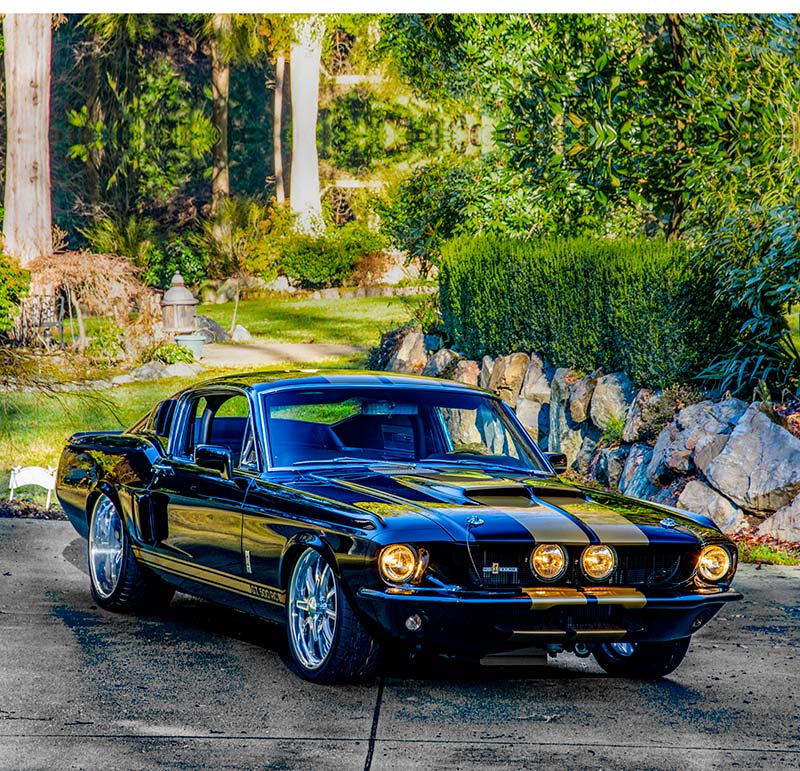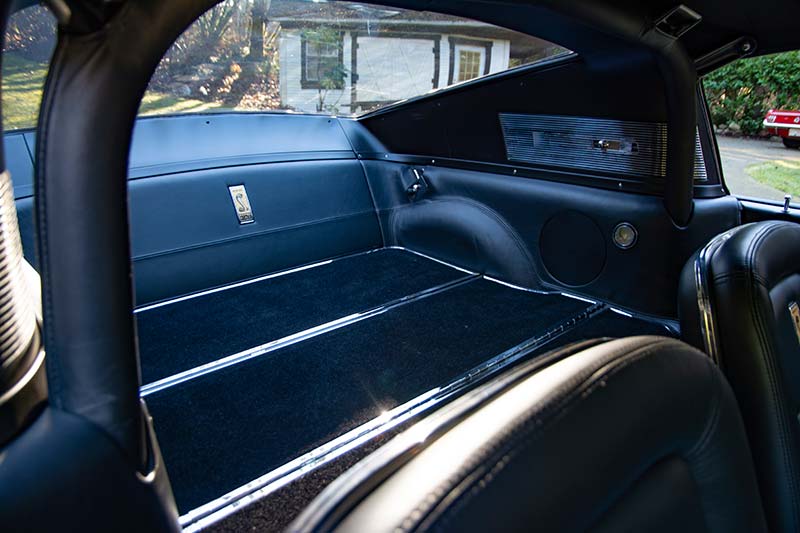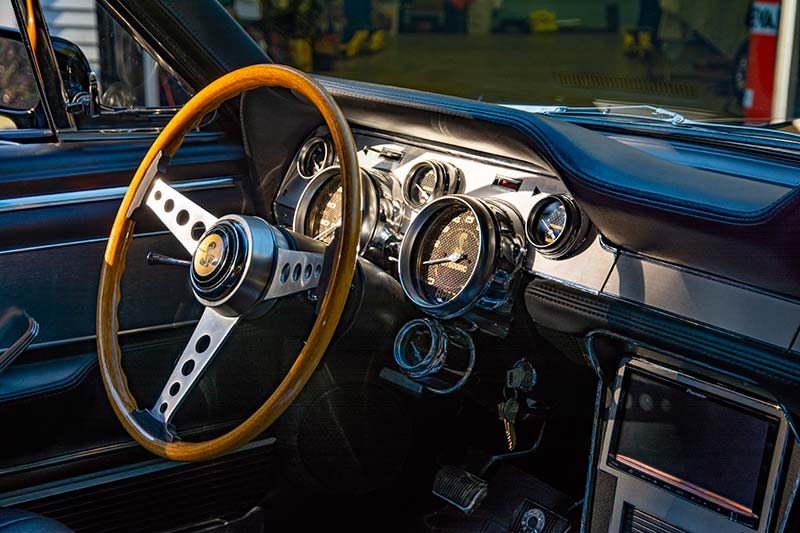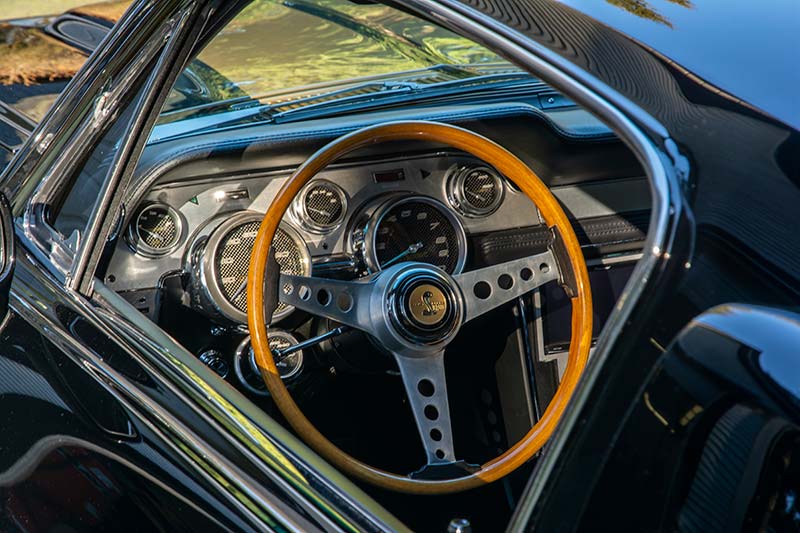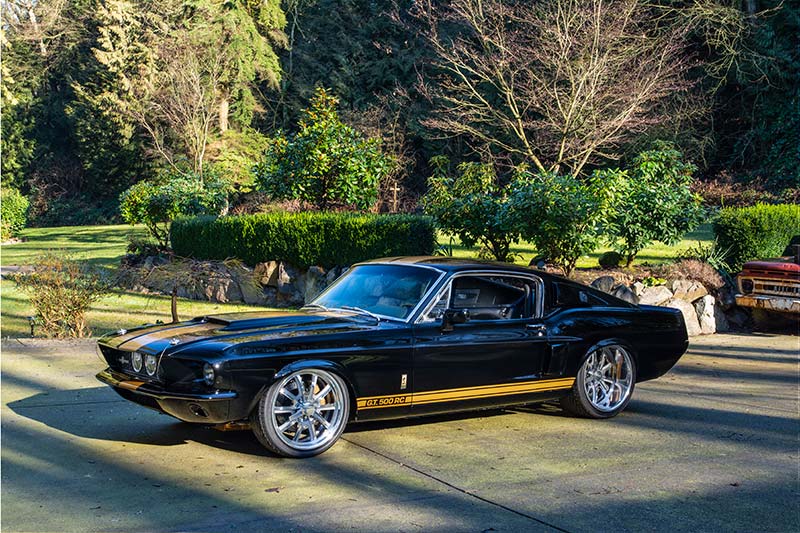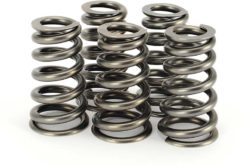Rick Leginus’ 1967 Shelby Pro Touring
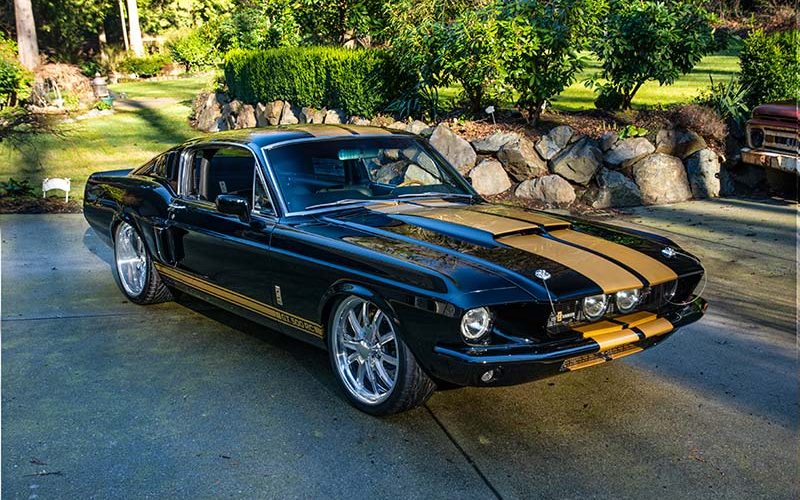
Story and photos by Cam Hutchins
Building an over-the-top 1967 Shelby GT500 Pro Touring was always in the cards; it was always going to happen. Rick Leginus grew up around four Shelbys and a 1970 Boss 429 as a kid. His Dad was the service manager at Metro Ford before opening his own shop in Maple Ridge, BC in 1964. He had a 1967 GT350,1968 GT350, 1968 GT500 KR, and a 69 GT500, but Rick ended up picking the ’67Shelby as his favourite.
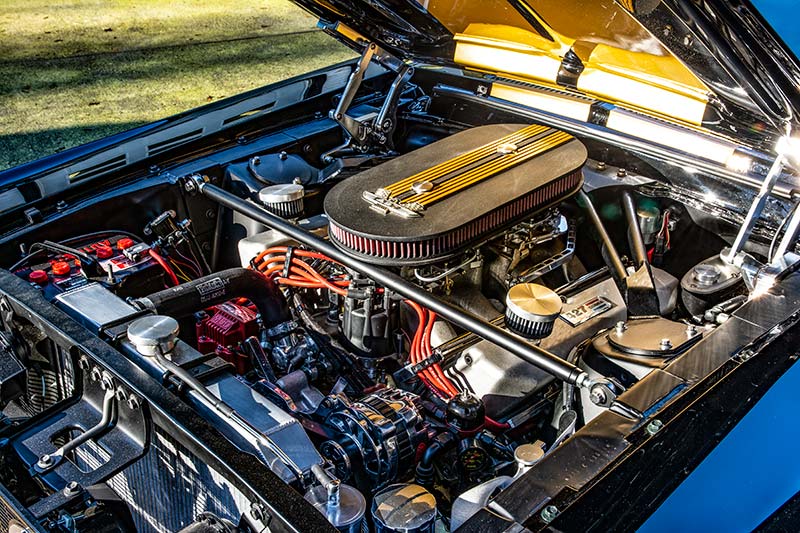
The Boss 429 sat at West Coast Ford in Maple Ridge for a few months, and Rick used to ride along with his Mom whenever parts needed picking up and would stare at the big beast sitting for sale on the lot. Luckily, his Dad finally bought it after seeing it for sale in the Haney Gazette. West Coast had sold it for $5,500 to a fellow from Mission whose wife was afraid of the car, and Leginus senior paid $3,800.
At 14 years old, he started building a ’64 Comet Caliente with 351 Cleveland, 4-speed and 9-in. rear end, and as soon as he could drive, his Dad told him he needed a Boss 302. In 1974, he found a sweet Boss 302 and drove it for 25 years. Fully loaded, Calypso Coral, louvres, fold-down rear seat and shaker. He even bought a brand new Boss 302 short block in a wooden crate from West Coast Ford for $660 in 1975. He beefed it up with dual fours and a 650-lift cam and took out the original Boss 302 for safe keeping. In 1987, he started to restore the car and installed the original engine to keep it a numbers-matching car. Finishing the restoration in 1990, he drove it till 1999 and sold it to Spokane, Washington, where the new owner won two international shows with the car.
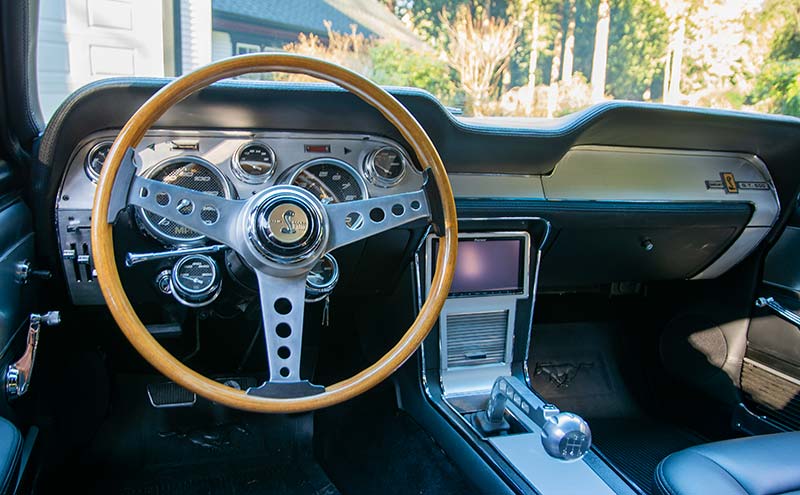
Getting a 1967 Shelby was getting more and more out of reach, and Leginus started building early Impalas and going the full Pro Touring route on them. He realized if he was ever going to build a ’67 Shelby, it would get the same treatment and then, after the “Gone in 60 Seconds” Eleanor Shelby came out, the die was cast and Leginus knew it was time to find a ’67 Mustang fastback donor car.
He was not going to rip up an actual Shelby, but finding a donor fastback in the mid $20,000’s seemed ridiculously expensive, for the rusted out wrecks seemed to be in the $20 K range. After looking for a year-and-a-half, he comes home from work one day in 2004 to find his wife had found the car on eBay and it was perfect. It was in Santa Ana, California for $9,000, a rust-free shell that had been sitting in a guy’s garage since 1977. Leginus made a deal for $8,900 and drove down the next weekend with a car trailer and brought it home. Interestingly, he did not use the hood and fenders that were with the car. The diff was a ten-bolt Chevy pumpkin as it had previously been running a 396 with TH400 tranny. He truly saved this car from a fate worse than crushing!
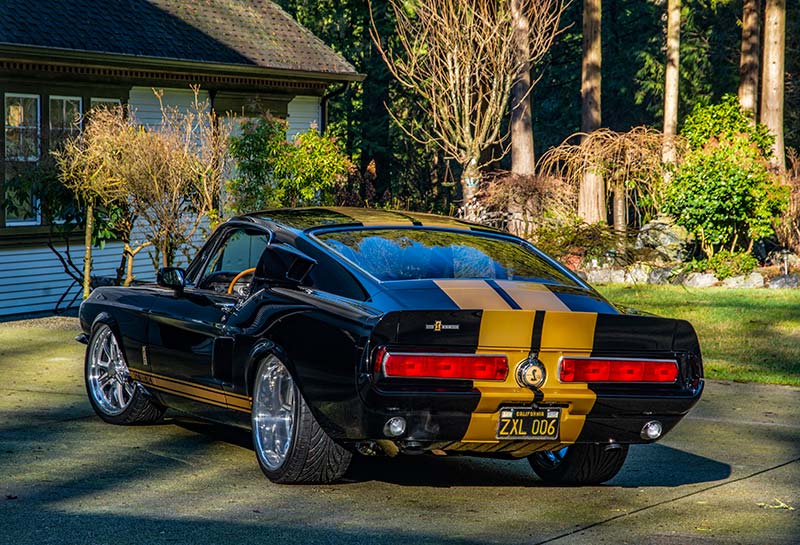
He had no interest in any running gear because years before, his dad had gotten a 427 side-oiler from his ’76 Ford Ranger pickup. He took out the 427 and was able to keep it as long as he rebuilt a 390 and stuffed it into his Dad’s pickup. His dad had been collecting 427 side-oilers from wherever hecould find them and even took advantage of Ford’s practice of selling “SelectBlocks” fully-assembled 427 side-oiler short blocks in wooden crates. He had seven of them at one time, along with a new Boss 429 for $1,200 and two Boss302 short blocks, all in wooden crates.
Starting with the most iconic part of the car, the Shelby hood, he had Dave Brownlow build all the fibreglass parts needed to complete the car. Brownlow had a ’67 Shelby hood, but Leginus wanted it to fit better than the original.So they built a new hood and added 1/8th of an inch to each side fora proper fit. The stock hood scoop never seemed “tough” enough so it was raised 5/8th of an inch in the front. This also gave more room for the dualquads.
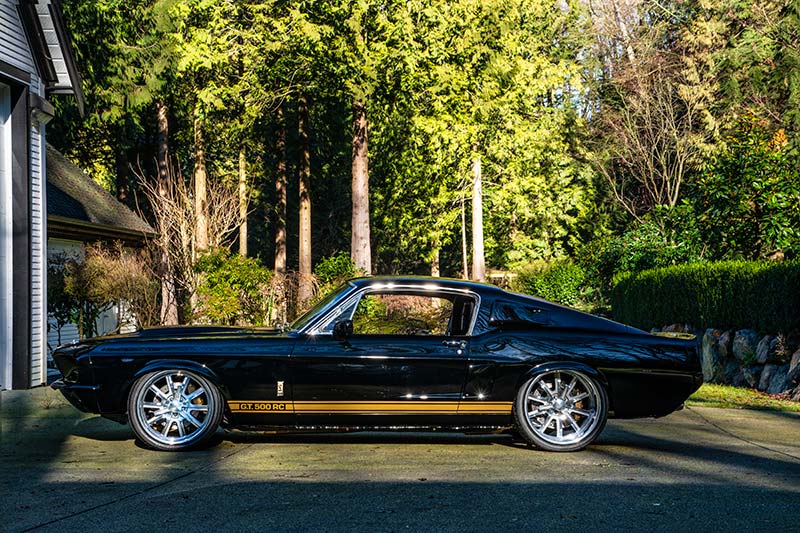
The front hood edge of the stock Shelbys and the front of the fenders always looked like they drooped too much, so Leginus took the time to raise them a bit, cutting the spot welds on the front of the fenders and pulling them up. This necessitated designing a whole new valance and grille treatment to fill the new gap. The rear deck was also redone with newly-designed rear fender extensions and spoiler with improved clearance and a better fit. The scoops also had to be redesigned and built for better tolerances and beefier looks.
The stock Shelby mirrors were also on the undesirable list, so a set of 1991 Mustang convertible mirrors were rebuilt and Brown low fibre glassed them into a one-piece design with the base modified to fit the ’67 door. These were electronically-operated mirrors, so controls that looked totally stock were sourced from a Lincoln Town Car.
The doors were perfect and rust-free, as was the shell. Knowing 1,000 hp might go into this car, Leginus needed a full frame, front to back. Jody at Rosi’s“Custom Metal” did all the custom metal work on this car. The frame crossmembers were tucked up for clearance for the 3-in. exhaust that fit tight to the floor. The frame was made to look like it came from the factory, if Ford had used full frames instead of unibodies with sub frames. It can handle some major power and there is lots of extra bracing with all the proper spot welds in place to appear factory rather than the “thrashed-on” race car look.
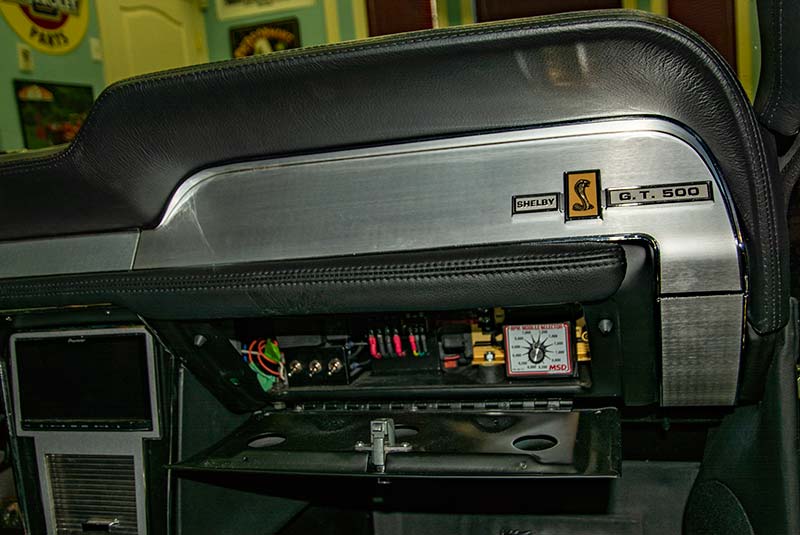
The 427 side-oiler got Blue Thunder high-riser heads and a tunnel-port dual four-barrel NASCAR intake by Dove that was custom-built purposely for the Blue Thunder heads. It is stroked to 496 cu. in., and Leginus was researching big power for the 427 and he came across Survival Motorsports and the “Engine Masters” challenge. They get the top builders to build up engines running pump gas. Barry Rabotnick had won the challenge a few times and seemed to have the perfect combo for making big power with this block. Leginus bought the full package off Survival Motorsports and after a run on the dyno, it made over 750 horsepower without blower or nitrous.
The ignition is the MSD 7 with dual rev limiters, one on the clutch pedal and one on the shifter. The engine is topped off with Blue Thunder valve covers and a stock Shelby 427 dual quad air cleaner.
The mill runs two 780cfm Quick Fuel Technology carbs with precise adjustments
available. The cam is a Custom Competition 696-lift roller cam designed by
Survival Motorsports with Crower lifters with additional oil ports, and TND
rockers. The custom headers came from Ford Power Parts in California and
because of the Blue Thunder Heads with the higher exhaust port, they needed to
be raised and this meant the shock towers needed to be widened 1.25-in. each
side, in the Boss 429 style.
The B-Kool rad with fan module built-in keeps everything cool, and the heat is
removed by the 3-inch polished stainless steel exhaust system that is tucked up
close to the floor, as this car is low. The scattershield is just 2.5-in. off
the ground, even with all the frame components and crossmembers tucked up as
high as possible into the car’s floor. The pulley system is Billet Specialties
sourced from the Old Car Centre in Langley.
The front suspension is Leginus’s design, built by Global West suspension from California, coil overs with double adjustable for stiffness going up and down, to aid in launching the car. The Wilwood brakes are 14-inch 6-piston front and back. The rack-and-pinion steering is supplied by Randall’s Rack and Pinion Ltd. from Kelowna, known for their high-quality rack-and-pinion systems.
The rear needed to be semi-tubbed,so using two extra Mustang inner fenders, Jody welded them to look stock but three inches narrowed on each side. The rear frame was narrowed a corresponding amount. The differential is a Chris Alston’s Chassisworks FAB9 Rear End out of Sacramento. It is Chrome Moly with 35-spline axles, that is extremely narrow with a billet four-link suspension with coilovers, built to Leginus’ particular design he had come up with to handle 1,000-plus horsepower. It was the first rear end Chris Alston’s Chassisworks had built this way.
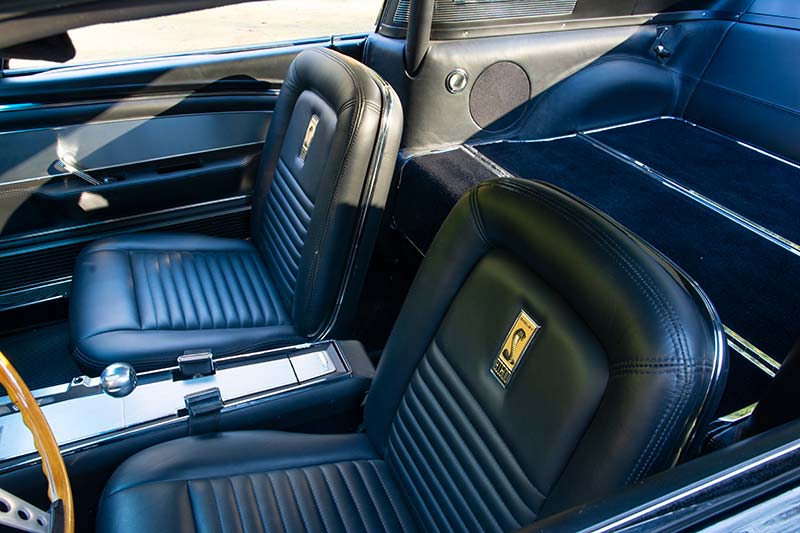
The Tremec TKO 600 five-speed manual transmission was custom-built by Modern Driveline. He had put a new stock Tremec in the car and once finished, he drove it for a week. Not satisfied with its performance, Leginus yanked it out and sold it as it was not quick enough shifting and seemed unsuitable for the car. He found Modern Driveline when trying to find a better clutch that could handle power in previous builds. Modern Driveline completely builds their own five-speeds based on the Tremec that are quicker and will handle a larger load. He also used twin 9.5-inch McLeod clutches with their hydraulic clutch replacing the mechanical linkage.
The interior was, of course, given the Pro Touring treatment starting
with a reproduction Shelby roll bar wrapped in leather and double stitched.
With the narrowed rear space created by the mini tubs, the fold-down rear seat
needed lots of work to make it look right and still function. The whole back
seat re-and-re with new fibreglass panels etc. took about 250 hours.
Starting with stock ’67 Mustang GT front seats, they were trimmed in leather
and double-stitched, and the stock plastic back panel was replaced with
leather, double stitched, and with Shelby embossed in them. Seat belts
including the roll bar-mounted shoulder harnesses were created by Snake Oil
products and are faithful recreations of original Shelby equipment.
All the normal fibreglass pieces in a Shelby that are normally painted black were created in new fibreglass and trimmed in leather, with the double stitching, as was the roof console. The headliner and sun visors were trimmed in cloth. Plush English Wool carpeting is used, complete with the heel pads created out of leather with embossed “GT500”
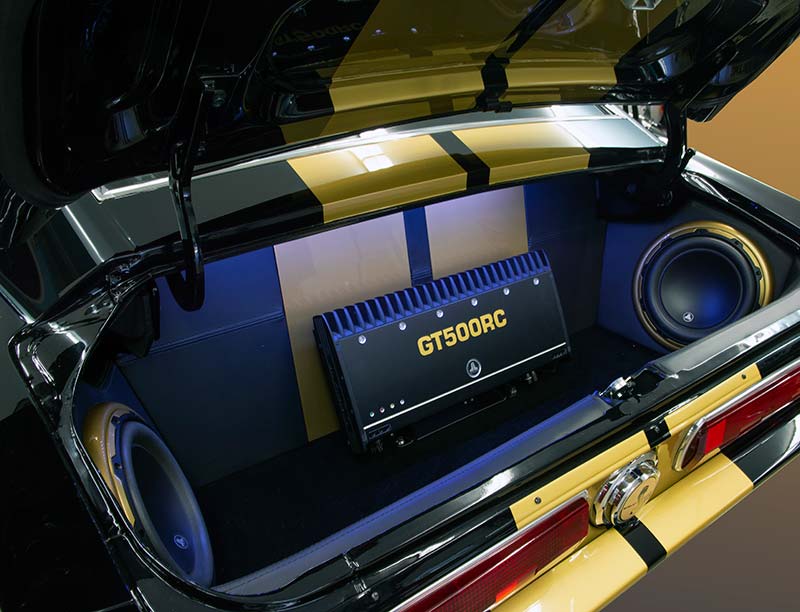
Kerry from Aero Machining designed and CNC’d the shifter, shift knob, throttle linkage, clutch reservoir, the big spinner knockoffs and many other smaller pieces for the car. The unique shifter has an integral switch for the line lock with internal wiring. A 1970 Boss 429 shifter boot fits the rectangular shifter perfectly and is recessed into the custom console.
The centre console is wrapped in double-stitched leather and the accordion panel normally hiding an ashtray is shortened. A 7-in. GPS Pioneer stereo is installed, and it all looks just the way Ford would have done it if they had 7-inch video displays in 1967. The dash pad was completely reworked and new billet defroster grilles were added onto the leather-wrapped surface.
The dash uses Autometer carbon fibre gauges that were taken to Paul Dyke who flipped the faces and added the black and gold numbers and the GT500 RC wording. There is a 160-mph speedo, a 10-grand tach and all the usual gauges a Pro Touring ride needs. As an engine builder, Leginus always specs an oil temperature gauge. Before getting on the throttle, engines need to have their oil at least 150 degrees Fahrenheit to ensure the engine is not damaged due to cold bearings, etc.
The steering wheel is a 1967 Shelby wheel that was pretty pricey and has a customised centre. The steering column was dropped off by a guy who heard Leginus was building a Pro Touring Shelby and he would want a tilt-away steering column. Sounds perfect but they are vacuum-operated and the big 427 did not offer enough vacuum. A solution was mounting a 6-litre Ford diesel engine vacuum pump with auto shut-off. Mounted secretly under the battery and fender well in the engine compartment, it powers the steering column perfectly.
The car is loud, so the sound system has to be louder. Designed by a buddy of Leginus, Tyler is an award-winning installer and has outdone himself with this car. It has four Hertz 6.5 speakers front and rear, two 10-in. 10W6 JL Audio subs in the trunk, one 1,200-watt JL Audio sub amp, and a main 600-watt JL Audio main amp. The antenna is hidden under the dash and the car is controlled and monitored by a drone system via Leginus’ cell phone; it can be monitored, locked or unlocked via his phone. It also has a Flaming River push-button start.
The ultimate look of a car is always set by its paint and wheels combo,and there was never any other choice besides black with gold stripes. He used“Painter Bob” and loves his low-key no-drama approach to painting a car, and his skill is legendary. The stripes continue under the hood, trunk lid and the gas tank.
The wheels were also pre-destined, as Leginus always wanted to use 427 Cobra wheels, but needed to create his own as he wanted 20×11-in. for the rear and 19×8 for the front. Boyd Coddington seemed the logical choice back in the day,as he had the TV show and his custom wheels were all the rage. So Leginus sen this design and $5,000, half of the cost, to Coddington’s shop. He never heard a peep, and while he busy working on the car, Coddington died and the company went bankrupt and Leginus had no wheels.
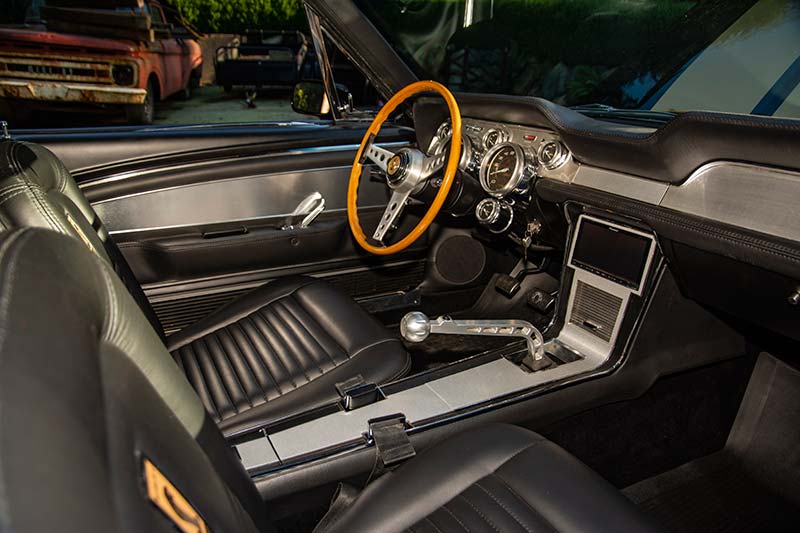
He needed to get some kickass wheels so he started calling around and his source at Weld Wheels told him to call “Ride Right,” a wheel manufacturer in Anaheim that specialises in custom Harley Davidson wheels. Apparently Coddington did not make all of his own wheels and farmed out wheels to this shop.
He was in Palm Springs on vacation and got a hold of the guy who said he had
about 100 sets of wheels here that he never got paid for. Leginus dropped the
kids at Disneyland and drove to the shop. The guy was super cool but had not
been paid for any of the wheels yet. Leginus spent a bunch of time going through
the pile but found his four wheels. They were only half-finished, but the guy
said he would finish up the wheels and ship them within three weeks for the
remaining $5,000. Since it had to be cash up front, Leginus went to the bank
machine and took another chance that he would actually get the wheels. True to
his word they were at the border three weeks later.
The only drawback was the centre knockoffs look great on 15-in. wheels but he
needed to have new ones fabricated in a larger size to perfectly suit the car.
Leginus went to his pal with a machine shop, and starting from a 12-in. by
4-ft. block of aluminum for each knock-off, more proportionally pleasing 12-in.
knock-offs were made.
Leginus has run an automotive shop in Port Coquitlam, R&L Automotive and Performance, for 35 years, and wanted to show off his eight years of work at the Annual PoCo Car show. He took two weeks off work to thrash on the car to finish it and drove it to the Downtown PoCo Car Show, winning Best of Show and also winning the local Business award. The car is equally suited for cruising,drag racing or track outings, and one run against a new Shelby Super Snake proved his car up to any task.
Since building his first Shelby, Leginus has three to go to match his Dad, so if you know of any good donor cars, give Leginus a call.




